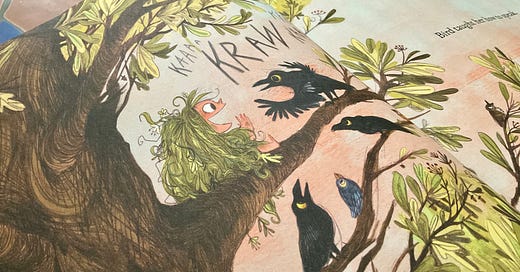Now Garuḍa was reading hymn one hundred and twenty-one, in triṣṭubh meter. There were nine stanzas, each one ending with the same question: “Who (Ka) is the god to whom we should offer our sacrifice?” Estuary to a hidden ocean, that syllable (ka) would go on echoing within him as the essence of the Vedas. Garuḍa stopped and shut his eyes. He had never felt so uncertain, and so close to understanding.
– Ka, Roberto Calasso
An unknown seed crystal touches the supersaturated solution of primal sound, and good salt crystallises. A last stop of air at the base of the soft palate, then the articulation. The first velar sound—from the Latin velum, awning, curtain, also where veil comes from—the first consonant, ka.
ka, cosmic waters and light; ka, space between earth and sky; ka, the question who?
The middle of the tongue touches the hard palate like a paintbrush to canvas—the first palatal emerges soft, ca. The tip of the tongue curls up and back behind the alveolar ridge toward the hard palate, a quick strike-and-release—the first retroflex beats like a hand on a drum, ṭa. The tip of the tongue widens like a stream and abuts the dam of the upper teeth—the first dental spills, ta. The lips close and open—the first labial unstoppers like a marble in a golisoda bottle, pa.
From within to without, fully realised with the help of the vowels—the procession of the consonants.
Kalidasa was a poet in the court of King Vikramaditya1 of Ujjaini. The king was in the habit of setting his poets challenges for his amusement. He tasked them with making a poem that ended with the first consonant clan of Sanskrit. Everyone was flummoxed. Kalidasa was, too, until he spotted a bunch of kids returning home from letter school.
का त्वं बाले काञ्चनमाला
kā tvaṃ bāle kāñcanamālā
Who are you, little girl? I’m Kanchanamala.
कस्याः पुत्री कनकलतायाः ।
kasyāḥ putrī kanakalatāyāḥ ।
Whose daughter might you be? Kanakalata’s.
किं ते हस्ते तालीपत्रम्
kiṃ te haste tālīpatram
What have you got in your hand? A palm leaf.
का वा रेखा क ख ग घ ॥
kā vā rekhā ka kha ga gha ॥
What is written in there? Ka Kha Ga Gha.
Image: One of my favourite pages from Wild by Emily Hughes. I look at it and see new meanings each time. Also, I’m convinced this is me in the picture2, wild-haired, wide-eyed, up a tree talking to the crows. Photo © Kanya Kanchana
#phonetics #sound #vowel #consonant #myth #poetry #story #bookreco #musicreco #filmreco
Vikramaditya is a title. Many historical kings have been associated with this title. Kalidasa’s king was likely Chandragupta II.
And now this sentence is catching the rhythm of R.E.M.’s sweetmelancholia Losing My Religion. Incidentally, this dreamlike video was directed by Tarsem Singh, who drew inspiration from Caravaggio, Márquez, Tarkovsky, and Indian films. He went on to direct a film that’s like nothing else. The Fall, 2006. Now restored in lush 4K and running on Mubi.




